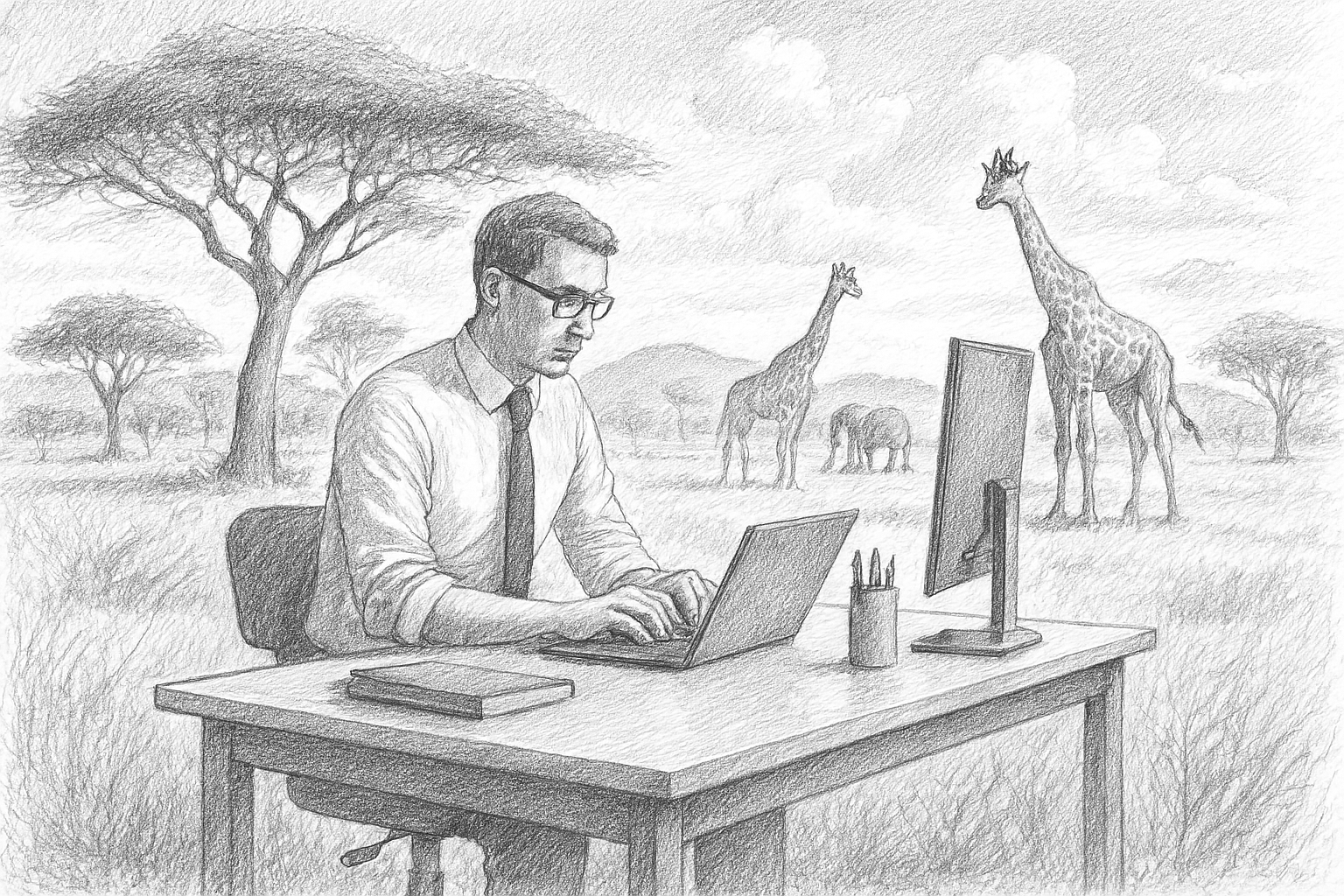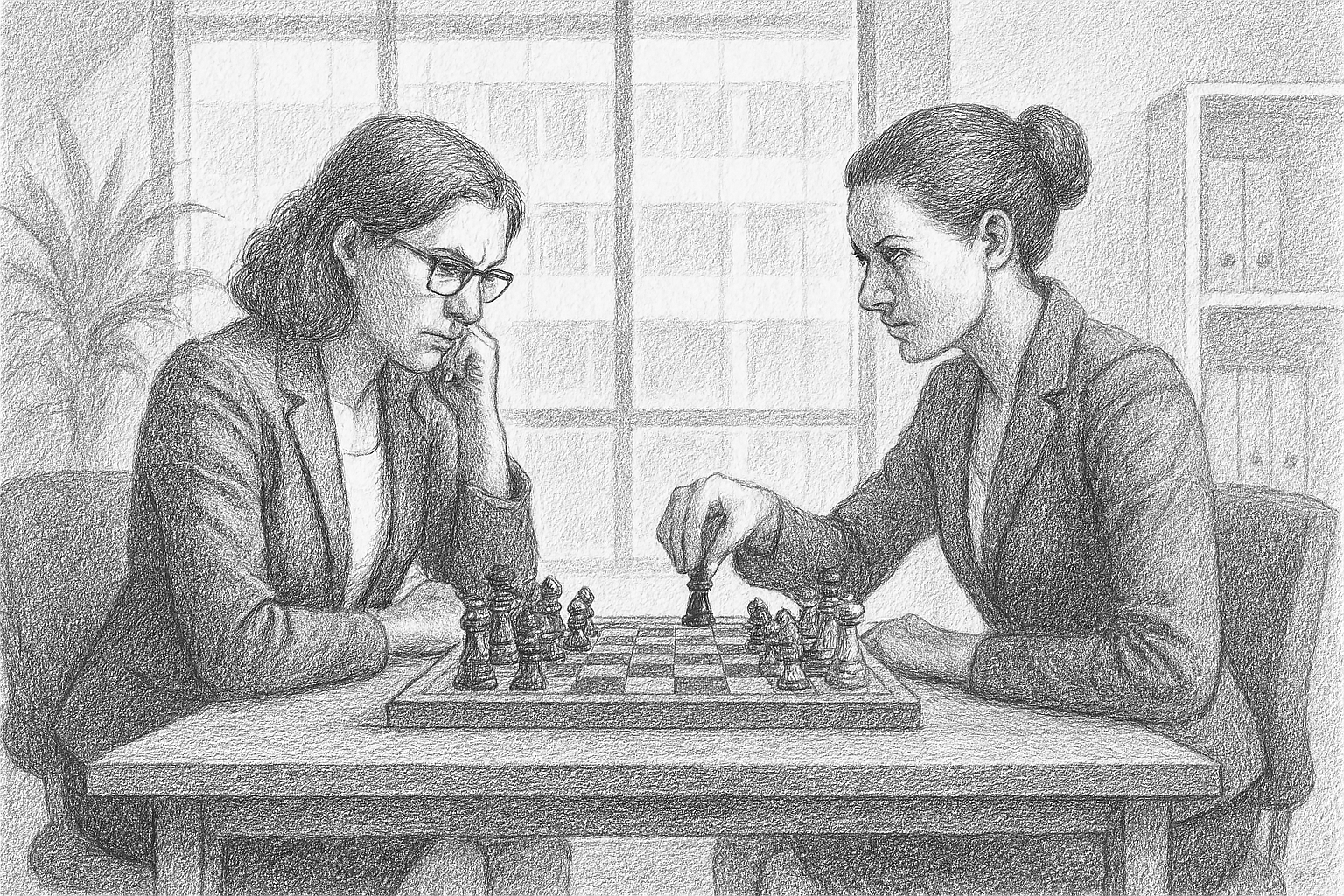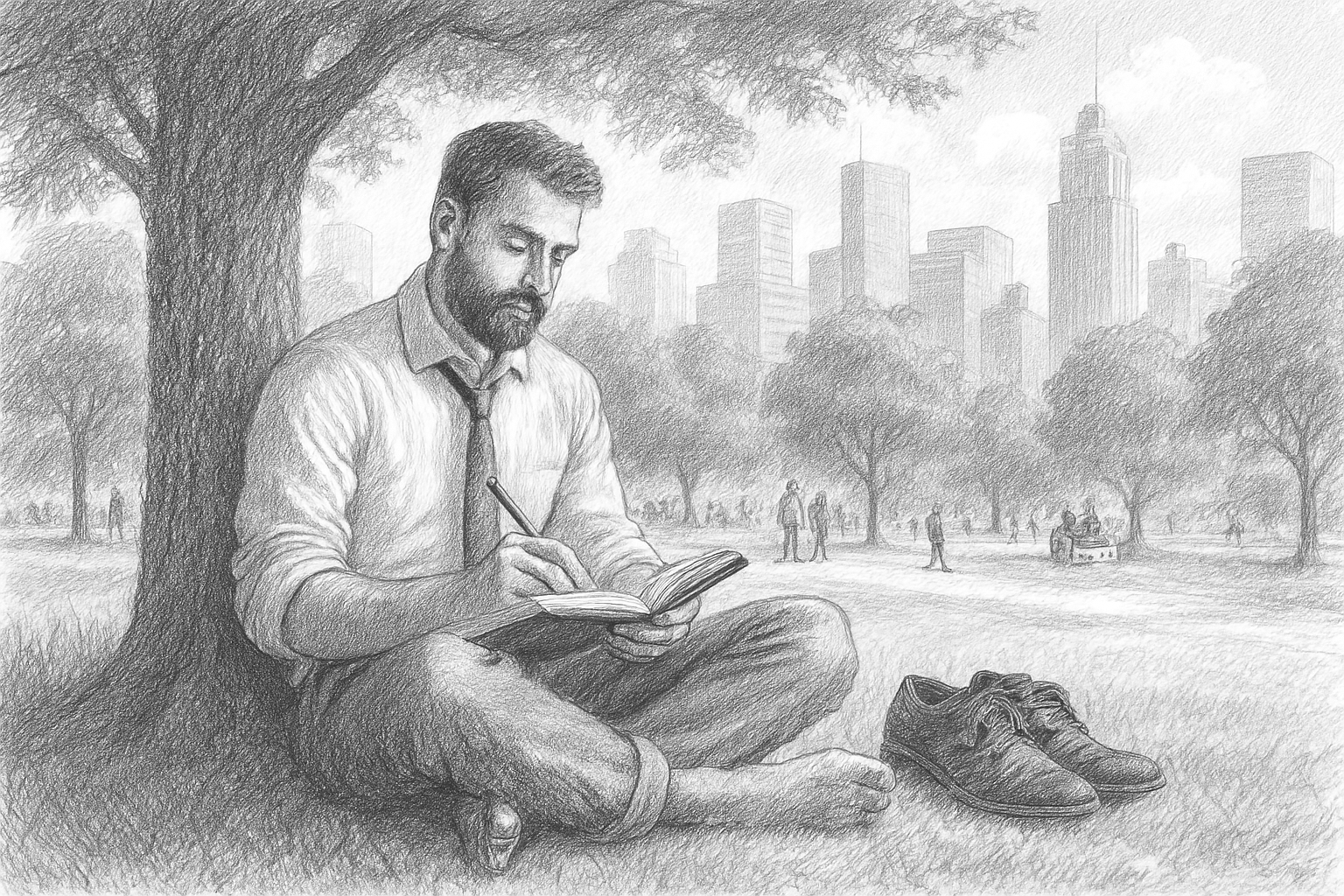Psychological lenses
Psychological lenses help us see the symbolic, the overlooked, and the deeply human — reshaping not just what we see, but how we see it. But before we try to explain the mind, shouldn’t we ask who’s holding the pen — and what’s already out of script?
Psyentifc fusion
Human nature didn’t come with a script, but over the years, many schools of psychology have attempted to produce one. Psychological Lenses introduces some of those attempts: perspectives that seek to explain why we think, feel and behave the way we do, in boardrooms and breakrooms alike. None of these lenses tells the whole story but each offers a first draft — a conceptual frame through which to view the infinitely layered spectacle we call the human condition. Still, no lens works in isolation, and none can settle the debate: each illuminates certain patterns while obscuring others. To approach anything resembling understanding, these sometimes competing but always complementary perspectives must be combined. Carefully, selectively and with the awareness that complexity resists a single point of view.

Though most Psyentific explorations spotlight a single lens, no perspective takes centre stage. Each piece, like a director's cut, offers a version, not a verdict, serving as a prompt and an invitation to engage, interpret and, if necessary, reframe. Psyentific may offer a point of view, but the one that matters most is the one being formed quietly by the mind engaging with it. Just as the camera frames one moment and then moves, the focus shifts with it. And when it does, the one looking becomes the focal point — not as a passive spectator, but an active interpreter — framing, reframing, and discovering meaning in the subtle interplay between what is seen, what is sensed and what slips just beyond the edge of awareness.
Evolutionary psychology

Evolutionary psychology doesn’t just ask what we do — it asks why those behaviours emerged in the first place and what ancestral logic continues to shape them, even in environments radically different from those in which they first emerged. From this perspective, most workplace phenomena present themselves not as modern inventions but as lingering remnants of instincts that once helped us survive, reproduce and repeat the cycle across the wild terrains of the ancient savanna.
We once chased prey, shared meat and feared predators. Now we chase promotions, share slides and fear feedback. What we do may look different now, but the motives and the circuitry behind them remain largely the same, though not always suited to the world we’ve built. When instincts tuned for physical survival meet the abstractions of office life, confusion follows, often to our own detriment: a skipped handshake feels like exclusion, a cold glance signals a status threat and a restructure registers as a coup. The context is modern, yet the reactions are anything but.
While evolutionary psychology offers a compelling framework, it doesn’t hold all the answers. In isolating ancestral logic, it risks becoming reductionist, overlooking the cultural and structural systems that shape behaviour today. Yet when used wisely, with other lenses addressing its blind spots, this perspective becomes both a powerful tool and a window. A way to see work as something ancient in disguise and a source of insight into why life, at times, still feels like the savanna. It can be instructive to ask ourselves whether the signals we receive — and the reactions they provoke — are as modern as they seem.
- Is my hunger for promotion a sign of progress or a bid for primacy in the pack?
- Was that meeting really necessary or just a ritual to reaffirm the hierarchy?
- Did the silence in the room feel like space or like threat?
Cognitive psychology

Cognitive psychology isn’t just concerned with what we think — it explores how thought emerges in the first place and attempts to understand the intricate scaffolding behind its quiet architecture. It treats thought not as a fixed product but as a process, shaped by what we notice, what we remember, what we feel and what we assume. Taken together, these processes, from attention and perception to language, emotion, judgement and decision-making, form the core of the complex information-processing system that this school of thought continues to unravel.
The emergence of cognitive psychology, a movement in the mid-20th century otherwise known as the cognitive revolution, marked a shift away from behaviourism and psychoanalysis, which had until then dominated either side of the Atlantic. Behaviourism, dominant in North America and influential in Russia, prioritised observable stimuli and responses but dismissed internal states as unknowable and irrelevant. Psychoanalysis, aligned with European traditions of introspection, existentialism and symbolic interpretation, was rich in metaphor and depth, yet lacked empirical rigour. Cognitive psychology offered a quiet departure and a middle path, restoring the mind to scientific inquiry without losing sight of its complexity. Supported and inspired by the technological advancements of the time, the paradigm drew its ideas, metaphors and, later, methodologies from what would become the defining marvel of the century — the computer.
The computer and its underlying processes — input, storage, processing and retrieval — became both the inspiration and the framework through which psychologists began to describe and interpret the workings of the human mind and the behaviours that follow, including those observed in the workplace. These frameworks help illuminate how decision fatigue leads to rushed choices or the quiet avoidance of complex tasks late in the day. How, late at night, tired and restless, we remain captive to the mind’s refusal to slow down and disconnect. And how, crucially, implicit bias, operating beneath awareness, colours hiring, collaboration and leadership perceptions, often favouring familiarity over merit.
Cognitive psychology opens a compelling window into how we think, but it doesn’t see the whole view. Its focus on internal processes risks overlooking the forces — cultural, social, developmental, to name a few — that shape thought and behaviour and remain vital to understanding what it means to be human. Its metaphors, borrowed from machines and mechanistic at their core, can flatten emotional depth into function, leaving little room for ambiguity, longing or paradox. Yet when held in concert with other perspectives, it remains a powerful tool and a window into the workings of our minds — not only for decoding behaviour, but for asking what our thinking protects, avoids or attempts to resolve. Beneath its surface of process-driven metrics and models, however, the questions it provokes are unmistakably human:
- Did I choose that career path, or did familiarity choose it for me?
- Is my leadership shaped by clarity, or by cognitive shortcuts?
- Is my calendar full because I’m productive, or because I’m avoiding something?
Humanistic psychology

Humanistic psychology isn’t concerned with what we do or how we function — it asks who we are at our core. Emerging in the mid-20th century as a response to both the mechanistic lens of behaviourism and the clinical detachment of psychoanalysis, it sought to restore the person to psychology — not as a bundle of symptoms, predispositions or conditioned responses, but as a whole being: capable of choice, meaning-making and growth.
This school of thought, shaped by figures like Carl Rogers, Abraham Maslow and Victor Frankl, placed emphasis on subjective experience, personal agency and the innate drive toward self-actualisation. It viewed individuals not as passive recipients of stimuli or unconscious forces, but as active participants in their own becoming. At its heart was a radical proposition: that people are fundamentally good and that given the right conditions — empathy, authenticity and unconditional positive regard — they will move toward wholeness. To this day, it remains the philosophical foundation of what we now recognise as counselling psychology and psychotherapy, where empathy, presence and trust remain the core conditions for healing.
In the workplace, humanistic psychology offered a new vocabulary — one that spoke not of efficiency but of fulfilment, not of control but of connection, not of metrics but of meaning. It asked what it means to feel seen by a colleague, to be trusted by a leader, to contribute not just labour but meaning. It illuminated how burnout isn’t merely a failure of energy, but often a failure of alignment — between values and tasks, between inner purpose and outer demand. And how creativity, collaboration and resilience flourish not in rigid systems, but in environments that honour autonomy, dignity and emotional truth.
Yet its emphasis on the individual can risk overlooking the structural and systemic forces that shape experience. It can romanticise freedom without accounting for inequality, or celebrate authenticity without acknowledging the cost of vulnerability in unsafe spaces. Still, when held alongside other perspectives, humanistic psychology offers a vital reminder: that behind every behaviour is a person, and behind every person is a story. Its questions are not clinical or diagnostic, but existential:
- Am I creating, or merely producing?
- Is my identity shaped by my work, or is my work shaped by my essence?
- Is my work a mask I wear, or a reflection of my inner truth?